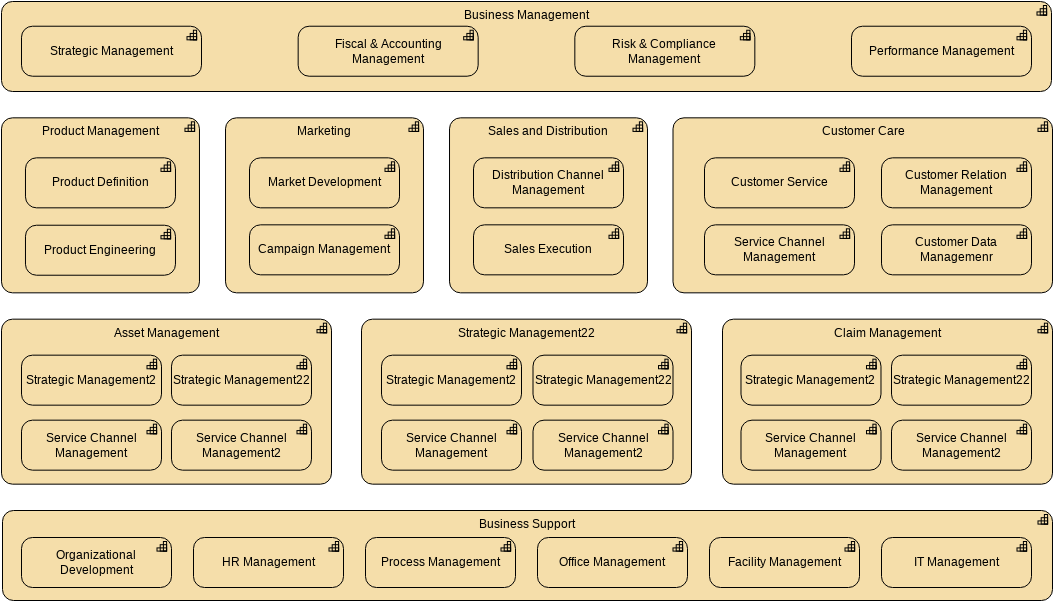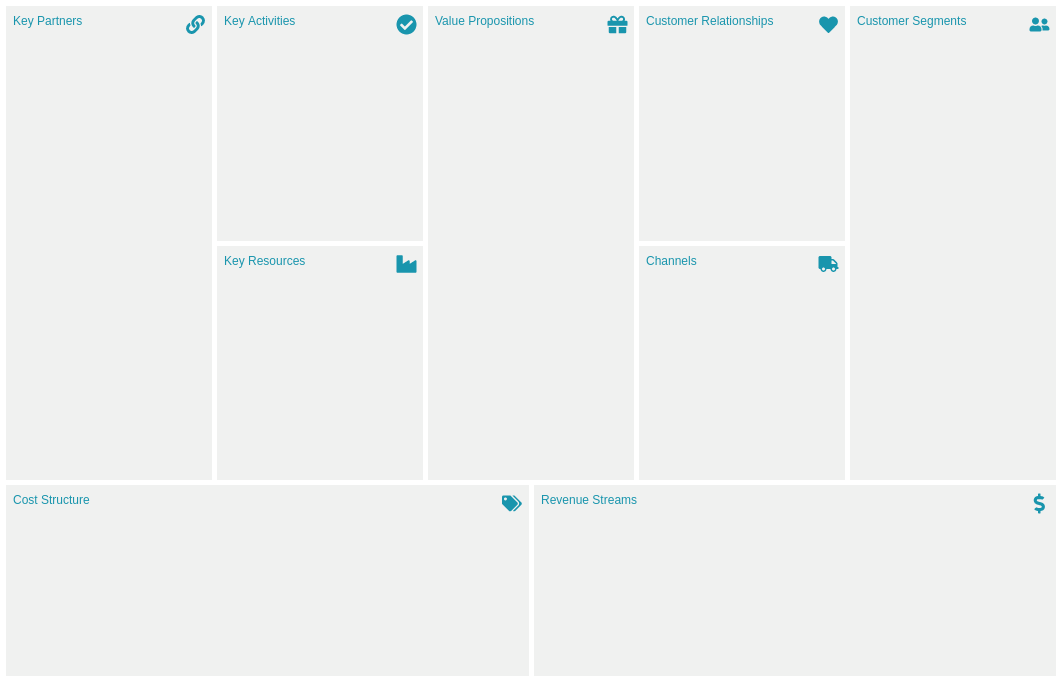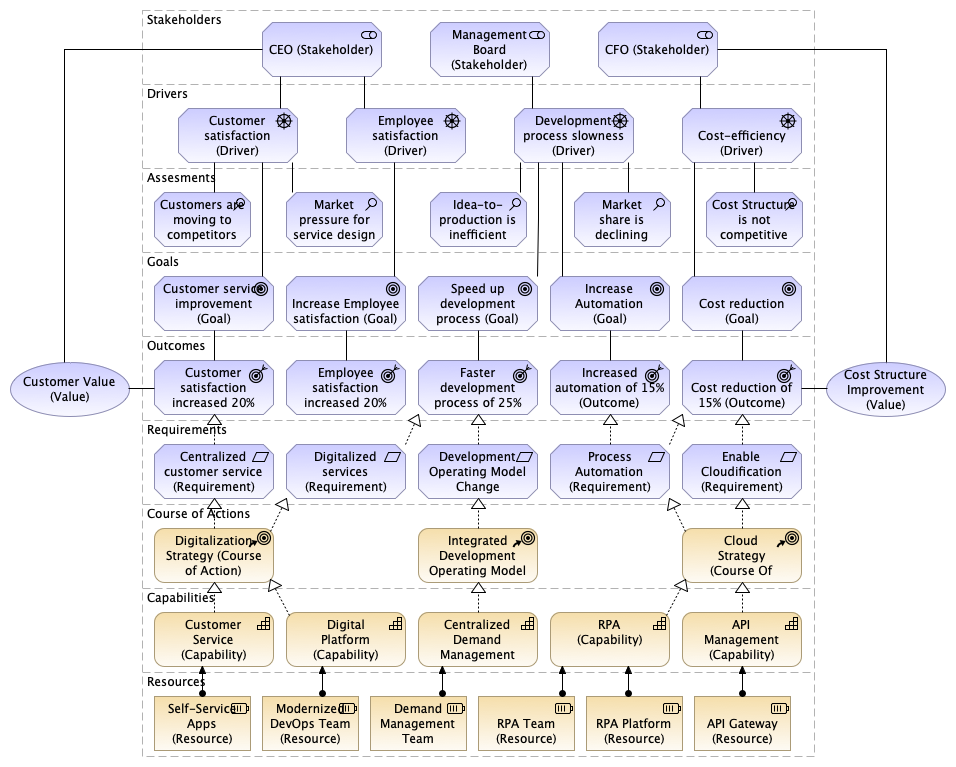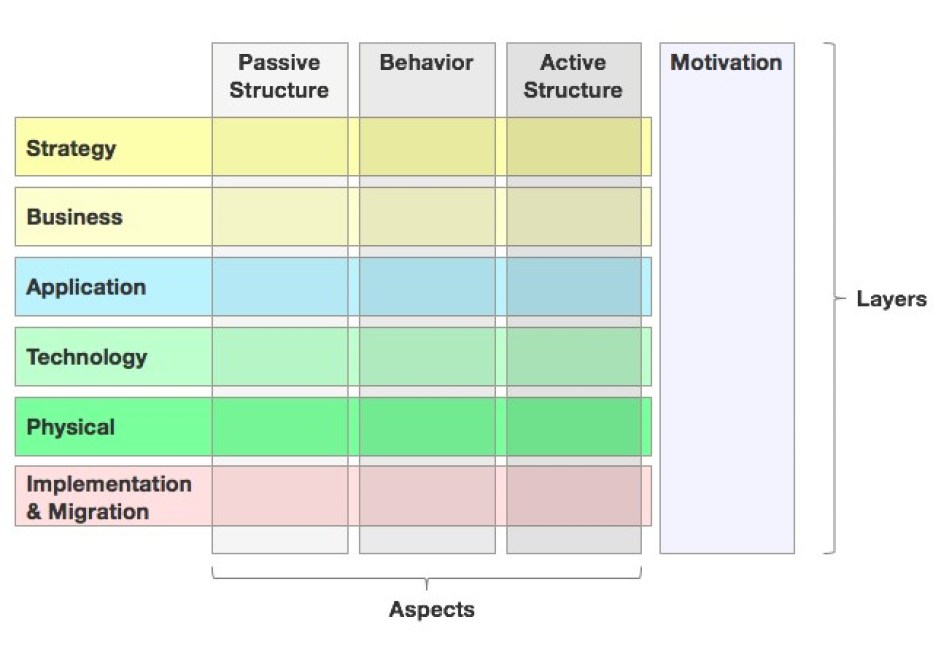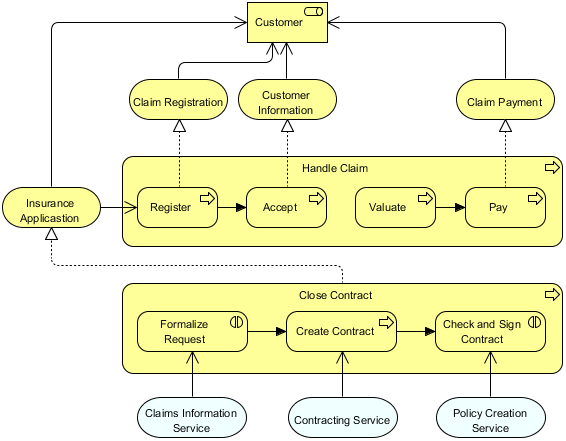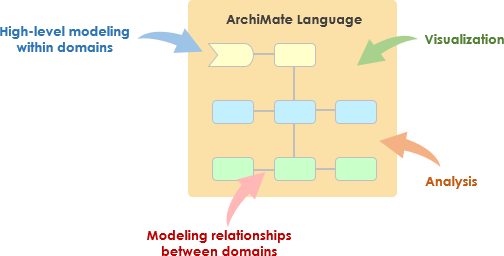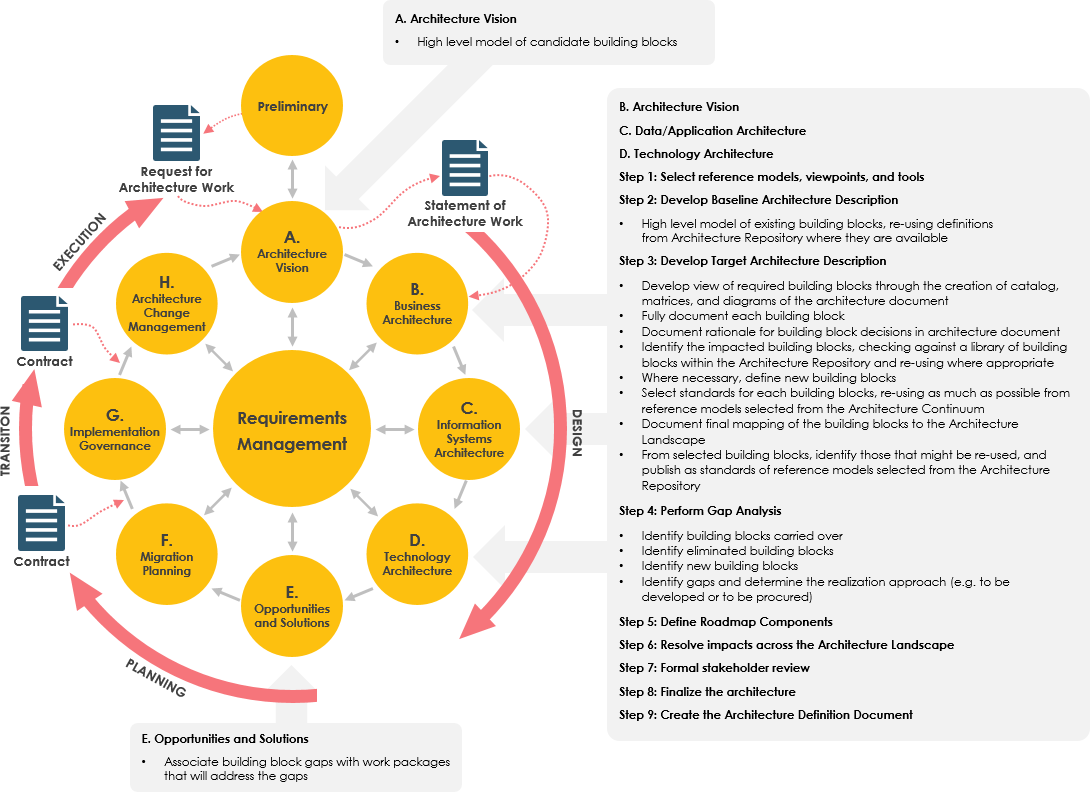Home » ArchiMate Viewpoint
What is a Capability Map in EA? A Capability Map in the context of Enterprise Architecture (EA) is a strategic tool that visually represents the capabilities of an organization. It outlines the relationship between various business functions and processes, providing an overview of what the organization can do to achieve its objectives. The map serves as a foundation for aligning business capabilities with strategic goals, facilitating informed decision-making. Why Use a Capability Map in EA Development? Strategic Alignment: Ensures that business capabilities are aligned with the organization’s strategic objectives, helping to prioritize initiatives.…
continue reading →
What is the Business Model Canvas (BMC)? The Business Model Canvas (BMC) is a strategic management tool that provides a visual framework for developing, describing, and analyzing business models. It consists of nine building blocks, which capture the essential elements of how a business creates, delivers, and captures value. The BMC helps teams to collaboratively visualize their business model on a single page, promoting better understanding and communication. Why Use the Business Model Canvas? Clarity and Focus: The BMC simplifies complex business concepts into easily digestible components, helping teams focus on critical aspects…
continue reading →
The Risk Analysis View in ArchiMate helps in identifying, assessing, and managing risks within an organization. This view is crucial for aligning IT security measures with business goals and ensuring compliance with standards like ISO 27001. Step-by-Step Guide Identify Risks Risk (Assessment): Represented by a purple oval with a stick figure and shield icon. This element symbolizes potential security threats to the organization. Assess Risks Risk Assessment: A purple document shape that evaluates each identified risk to understand its impact and likelihood. Define Control Objectives Risk Control Objective: A blue rectangle with ‘A’…
continue reading →
Case Study Description: Application of the Motivation View This case study examines the implementation of the Motivation View framework within an organization focused on enhancing service delivery and increasing customer satisfaction. It highlights the roles of key stakeholders, including the CEO, management board, and CFO, in driving strategic initiatives aimed at improving employee engagement and operational efficiency. The assessment phase identifies critical drivers such as customer satisfaction, employee motivation, and market trends, leading to clear goals: a 20% increase in customer satisfaction, improved employee engagement, and a 10% reduction in operational costs. The…
continue reading →
ArchiMate® is a modeling language designed to support the description, analysis, and visualization of architecture within an organization. It provides a framework that covers various aspects of enterprise architecture, enabling stakeholders to understand the relationships between different elements. This tutorial will guide you through the key diagram types and elements based on the layers and aspects of the ArchiMate® Framework. Overview of ArchiMate® Layers and Aspects ArchiMate® is structured into several layers, each containing specific elements that represent different architectural aspects: Strategy Layer Business Layer Application Layer Technology Layer Physical Layer Implementation &…
continue reading →
Introduction ArchiMate viewpoints are a critical concept within the ArchiMate modeling language, which is designed to help organizations describe, analyze, and visualize their enterprise architecture. Viewpoints in ArchiMate provide a way to focus on specific aspects or concerns of the architecture, making it easier to communicate complex information to different stakeholders. Here's a more detailed explanation of ArchiMate viewpoints and how to use them: What Are ArchiMate Viewpoints? ArchiMate viewpoints are essentially predefined perspectives or templates for creating architectural models. Each viewpoint is tailored to address specific concerns, interests, or goals of different…
continue reading →
Introduction ArchiMate is an enterprise architecture modeling language that serves the purpose of describing, analyzing, and visualizing architecture within and across business domains in a clear and unambiguous manner. It is an open and independent standard, governed by The Open Group, and it has gained wide acceptance in the field of enterprise architecture. Key Points about ArchiMate: Scope and Focus: ArchiMate distinguishes itself from other modeling languages, such as UML and BPMN, by its specific focus on enterprise architecture. While UML and BPMN have broader applications, ArchiMate is designed to model the architecture…
continue reading →
Introduction In today's fast-paced business environment, enterprises are constantly seeking ways to align their IT strategies with their overall business goals. The Open Group Architecture Framework (TOGAF) provides a comprehensive approach for achieving this alignment, and ArchiMate, an open and independent modeling language, offers a powerful tool to visualize and communicate complex architectural concepts. In this article, we will explore how ArchiMate can be seamlessly integrated into TOGAF's Architecture Development Method (ADM) to enhance architectural practices and facilitate effective communication across all levels of an organization. Understanding TOGAF ADM The TOGAF ADM is…
continue reading →
TOGAF ADM Overview The TOGAF ADM is a foundational component of the TOGAF Standard, a time-tested and reliable framework that has been successfully employed by numerous enterprises over the years. Its primary objective is to guide the creation of an Enterprise Architecture that not only supports but also drives the realization of an organization's vision and requirements. TOGAF 10, the latest version, provides comprehensive guidance on developing enterprise architecture that facilitates effective change. What is the TOGAF ADM? The TOGAF ADM represents a logical, systematic approach to acquiring knowledge necessary for enterprise architecture…
continue reading →
What is Location Catalog in TOGAF ADM The Location Catalog is a database that contains a list of all the places where a company operates or has architecturally significant assets such as data centers and end-user computing equipment. It helps in identifying the scope of a project and assesses the current landscapes or target solutions. For instance, if a project aims to upgrade desktop operating systems, the location catalog will help in identifying all the places where such systems are deployed. Additionally, when new systems are being implemented, a diagram of locations is…
continue reading →

